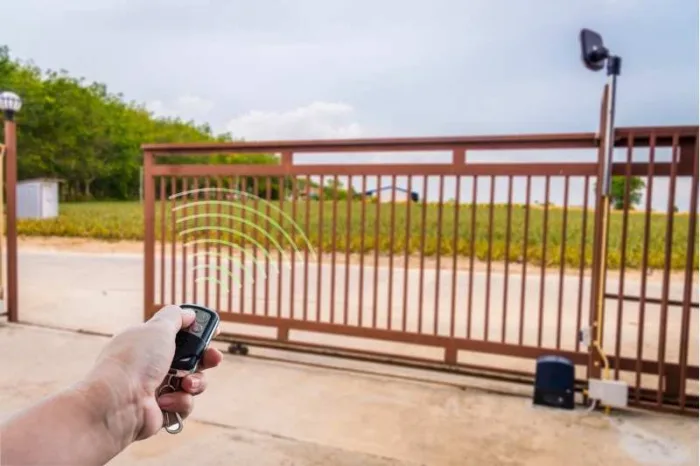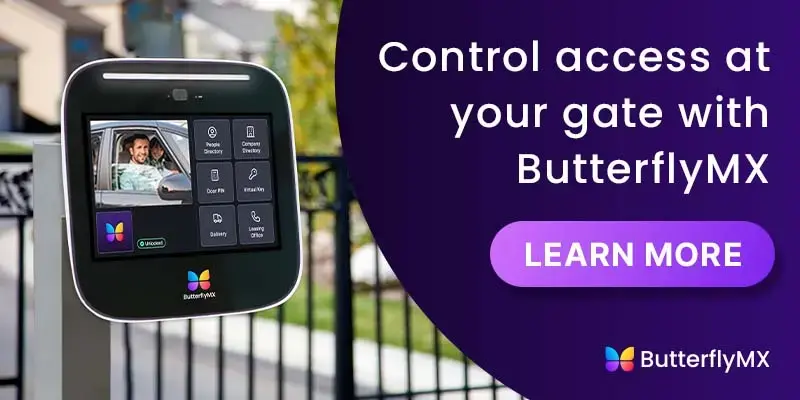Key takeaways
- Ensuring that your residents can pass through your gate with minimum hassle at no expense to security should be your biggest priority.
- Ultimately, the cons of having a key fob system outweigh the pros. Instead, you should go with a cloud-based system such as a gate video intercom or gate keypad.
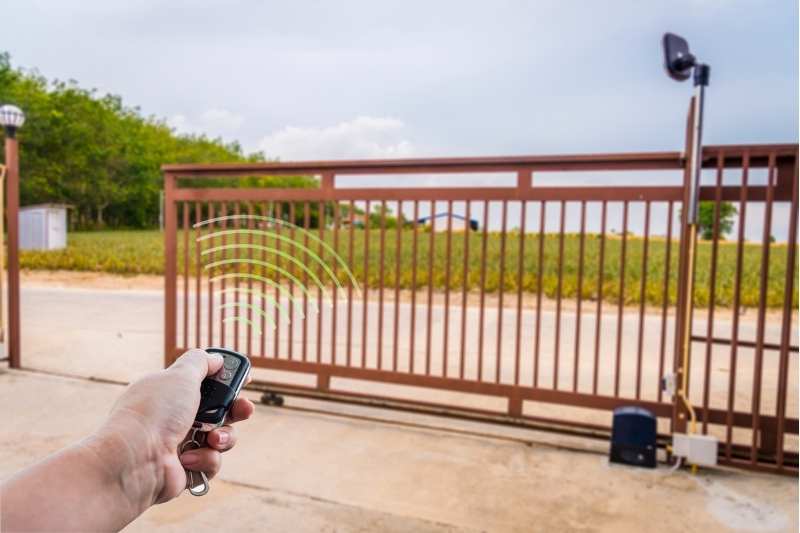
If your property has a gated entrance, you might consider using a gate key fob system to make access more intuitive and seamless. But the demands of every property aren’t the same. So, it’s important to first determine whether a gate key fob system is right for your property.
This guide explores what gate key fobs are, how much they cost, and how they work. It also goes over the pros and cons of fob systems for gates and suggests some great alternatives.
This post covers:
- What is a gate key fob?
- How does a gate key fob work?
- The pros and cons of a gate key fob entry system
- The best alternative to a gate key fob system
What is a gate key fob?
A gate key fob is an access control system that consists of a lock on your gate that tenants open electronically with a fob. The fob is a small device that is electronically coded to send signals to your lock and gate opener. Similar to traditional keys, you’ll have to hand out (and program) key fobs for each tenant.
The components of a gate key fob system include:
- Electronic or magnetic lock. This is a specialized gate lock that operates electronically or magnetically to automatically unlock when the fob system tells it to.
- Fob. Similar to keys, these are little devices that residents use as a credential to gain access to the gated entrance. It resembles the fob device used to remotely lock or unlock cars.
- Access reader. This is the device that scans the key fobs.
- Gate opener. Most systems also require an automatic gate opener so that no one has to manually open the gate.
How much do gate key fobs cost?
The price for gate key fob systems ranges from $1,200 to $2,500 per system (this includes installation). However, this doesn’t include the price for individual key fobs or badges. Key fob costs range between $25 and $400.
If you install a gate fob system, you should include a key fob replacement policy in your residents’ leases, as fobs may cost quite a bit more to replace than metal keys.
How does a gate key fob work?
Gate key fob systems work by enabling you to electronically unlock the gate by scanning an NFC– or RFID-powered fob at the access reader. All you have to do is bring your fob within a certain distance of the access reader to release the lock. This is usually accompanied by a beep or green light to confirm access was granted.
The majority of fob systems operate with RFID technology, which stands for radio frequency identification. RFID systems send signals across an electromagnetic field between the key fob and the reader. If the reader scans an authorized fob, it sends a signal to the gate opener, which then unlocks the gate.
Each fob is distinctly encoded for each resident. Depending on the system you have, this information may be used to monitor which resident has entered the property at a certain time.
For a fob system to work, your gate must also have an electronic or magnetic lock. When a fob reader scans an authorized credential, it tells the electronic or magnetic lock to unlock so the person can open the gate.
Watch how the ButterflyMX gate intercom works:
How do you program a gate key fob?
To program a gate key fob, you simply sync the fob with the access reader. Every system is different, but most require you to program each fob one by one.
Some gate fob systems include software that allows you to program fobs and adjust each tenant’s access permissions through your computer or mobile device.
However, there are systems that require you to program fobs manually within the hardware itself. In most cases, this means pressing and holding a button on each fob to pair it with the system’s reader.
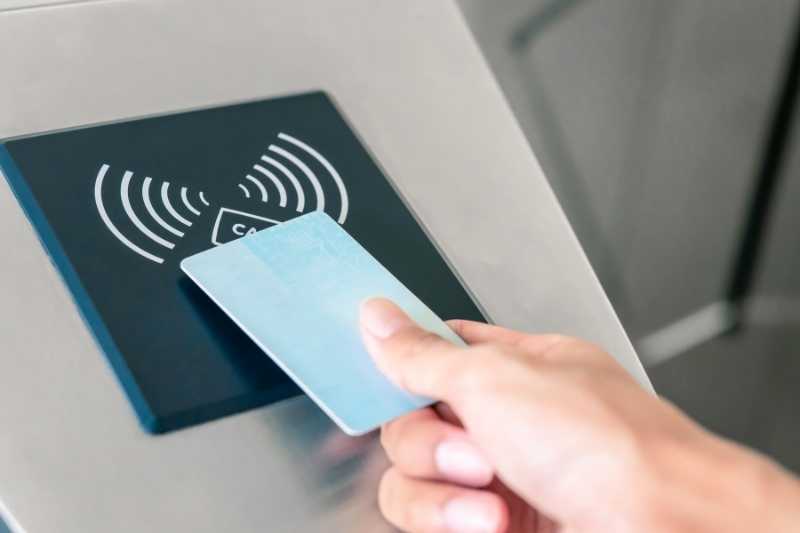
The pros & cons of a gate key fob entry system
While certainly a step up from a basic and old-fashioned lock and key system, gate key fobs still have a few flaws as an access control system.
Pros include:
- Key fobs are much easier to use than regular keys. All residents have to do is tap or scan their fob before entering.
- Most key fobs can be remotely deactivated if a resident loses one. Additionally, some fob systems track entry events.
- Many fob systems can be installed relatively quickly at each gated entryway. Electric gate key fob programming is also fairly fast and easy.
Cons are:
- Lost or stolen key fobs are a big problem. Or, residents may simply forget their fob and get locked out.
- Fobs can be expensive to replace. Additionally, staff must spend time deactivating lost fobs and programming new ones.
- The entry system has no audio or visual component. If a resident is stuck or forgot their fob, there’s no other way to gain access or call a staff member for assistance.
- There are no visitor management features or easy entry methods for delivery drivers and guests.
- Cell phones and other electronics may interfere with fobs and cause them to malfunction.
- In rare cases, a gate remote can be copied and a counterfeit key fob can be used without authorization.
The best alternative to a gate key fob
The best alternative to a gate key fob system is a gate keypad or a gate video intercom system.
When choosing a gate entry system, first decide who needs access to your gated entrance. If only residents and staff members use the entrance, a gate keypad might suffice.
But if visitors, delivery carriers, and other guests also need access to the gate, your best option is a gate intercom system with a camera.
Advantages of gate keypads:
- They’re fast and intuitive to use.
- Residents can gain access without carrying around a key or fob.
- Temporary PIN codes can be provided to delivery drivers, mail carriers, and guests.
- Keypads log who enters the property, as each resident has their own unique PIN code.
- They’re quick and easy to install.
- Some smart gate keypads have a mobile app, so tenants can lock the gate with their phones.
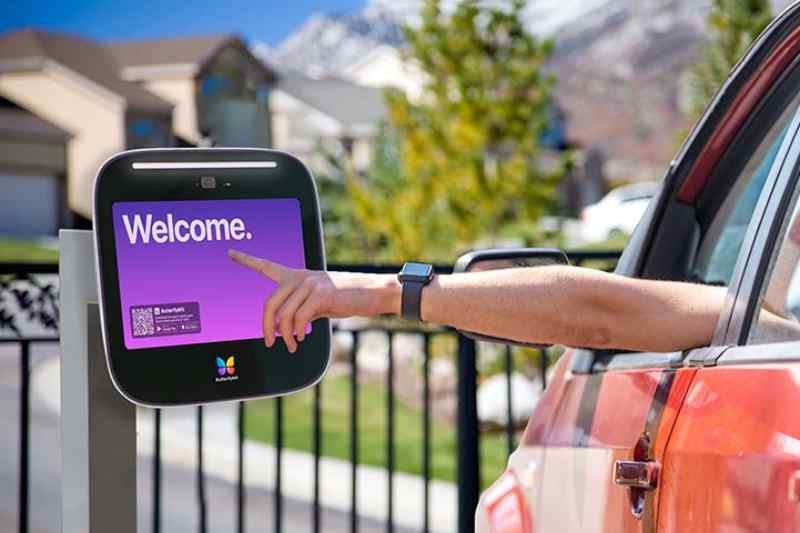
Advantages of gate video intercoms:
- Residents can remotely allow guests into the property.
- Smartphones can be used as a gate remote.
- Video intercoms take a picture of everyone who enters the property along with the time and date. This information is easily accessible for security purposes.
- Residents can see and communicate with guests and delivery drivers trying to enter the property.
- Visitors can access a resident directory to look up a resident’s unit number and contact them.
- The installation process is easy if you choose a wireless system. You won’t need to run complicated wiring throughout your property and into your residents’ units because they can use their phones instead of in-unit hardware.
- Cloud-based gate intercoms automatically download software updates.
